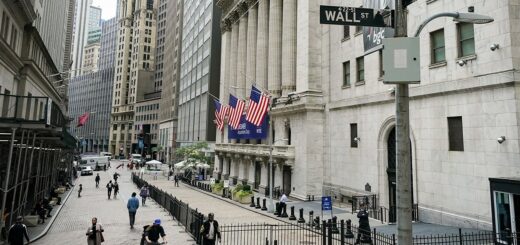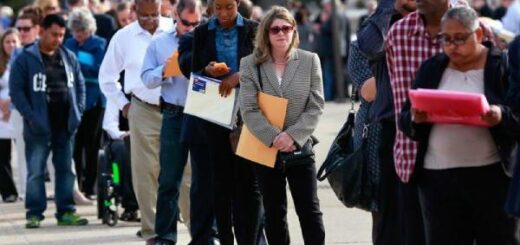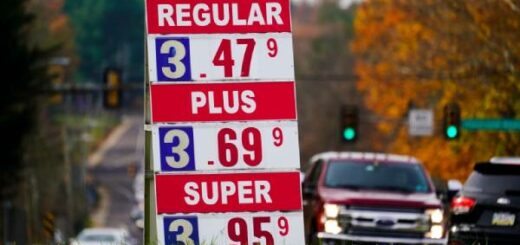Financial experts caution of inflation imbalance in 2022

An examination by the Penn Wharton Budget Model viewed that as low and center pay families spent around 7% more in 2021 for similar items they purchased in 2020 or 2019, a normal of about $3,500.
Specialists presently dread that destitution will ascend in mid 2022 as pandemic-related government benefits deliberately get rid of and President Joe Biden’s general social spending bundle mulls in Congress.
There is one brilliant spot for low-wage laborers: Median wages bounced over 5% in November for the base quartile contrasted and a year prior.
Market analysts caution that the Covid pandemic has prompted a shiny new time of inflationary imbalance, with helpless families enduring the worst part of increasing expenses.
The Covid pandemic has prompted another time of expansion disparity, financial specialists caution, in which helpless families endure the worst part of rising costs.
“They’re basically hoping to extend a dollar most days,” said Chris Wimer, co-overseer of the Center on Poverty and Social Policy at Columbia University. “It will prompt tough decisions between placing gas in the vehicle or paying for your children’s kid care or putting food on the table.”
This is on the grounds that an extensive piece of their assets heads toward classes whose costs have headed up. For example, suppers is up 6.4% in the course of recent months, though fuel is up 58%. Furthermore now numerous people are managing these inordinate expenses as government upgrade applications blur.
“They fundamentally need to stretch a greenback generally speaking,” expressed Chris Wimmer, co-overseer of the Middle on Poverty and Social Coverage at Columbia College. “It might bring about irksome choices between setting fuel inside the auto or paying for child care on your young people or putting suppers on the work area.”
On the other hand, spending by well off families went up by just 6%.
A new examination by the Penn Wharton Budget Model saw that as low and center pay families spent around 7% more in 2021 for similar items they purchased in 2020 or in 2019. That converts into about $3,500 for the normal family.
Change in spending for the affluent
“What they end up being purchasing has been hit more enthusiastically by the stockpile crunch,” Smetters said. “It’s more extensive based than before.”
In the interim, pandemic-related creation disturbances have driven up the expenses of items that helpless families depend on.
The discoveries dovetail with an investigation of credit and check card information by Harvard Business School market analyst Alberto Cavallo toward the beginning of the pandemic. He showed that low-pay shoppers experienced cost expands that were generally twofold those of more affluent ones.
This uniqueness is normal during inflationary periods, said Kent Smetters, who coordinates the Penn Wharton model. However, since the 1980s — the last time costs rose this rapidly — higher-pay families have moved a greater amount of their spending away from merchandise and toward administrations. For instance, in 2020, food was 12.7% of the financial plan for the top 5% of families, contrasted and 16% of the spending plan for the base 20%.
Specialists currently dread that neediness will ascend in mid 2022 as pandemic-related government benefits get rid of and President Joe Biden’s general social spending bundle mulls in Congress. Of specific concern is the finish of regularly scheduled installments of the kid tax break, which gave families $300 every month for every kid more youthful than 6 and $250 for more seasoned children.
In 2019, a joint paper from scientists at Columbia and the London School of Economics assessed that around 3 million additional individuals would qualify as living in neediness assuming their wages were adapted to the expansion rates they experience.
Stress over finishing tax reductions
“You see a reasonable effect of those installments,” Wimer said. “We’re clearly completely stressed over January.”
“There are a few arrangements in this bill that perhaps we could have a bipartisan settlement on once expansion quiets down,” Sen. Lindsey Graham, R-S.C., told journalists recently. “Be that as it may, the present moment isn’t the opportunity to add any more administrative spending, developing the public authority, making an issue for expansion.”
As per Columbia, the advantage kept almost 4 million kids out of destitution. The last month to month check was given Dec. 15.
That contention seems to have influenced Sen. Joe Manchin, D-W.Va., who has raised cautions about the expense of the youngster tax reduction assuming that it were proceeded throughout the decade. He has pushed for more tight cutoff points on the advantage and work necessities for other social projects in the bundle. Without his vote in the equitably parted Senate, Democrats can’t pass the bill.
There is one splendid spot for low-wage laborers: They have gotten probably the greatest increases in salary of the pandemic, assisting with buffering the ascent in costs. As of November, middle compensation development over the previous year has arrived at the midpoint of over 5% for the base quartile, as per the Federal Reserve Bank of Atlanta. In the mean time, normal compensation development for the top 25% has eased back this year to only 2.7% as of November.
“This isn’t an emergency of shortage. It’s an emergency of everybody having beyond what the market can at present inventory,” Samuel Hammond, head of destitution and government assistance strategy at the Niskanen Center. “Assuming we need powerful monetary development, we are likely must endure higher expansion and rising product costs since that is a result of blasting shopper spending and venture.”
“There’s a case to be made that tax breaks are exceptionally fundamental — that assuming we weren’t managing expansion, these are unquestionably a method for supporting the impeded,” said Gustavo Flores-Macias, academic administrator at Cornell University. “Yet, the political planning is poor in view of expansion.”
Disclaimer: The views, suggestions, and opinions expressed here are the sole responsibility of the experts. No STOCKS MONO journalist was involved in the writing and production of this article.



